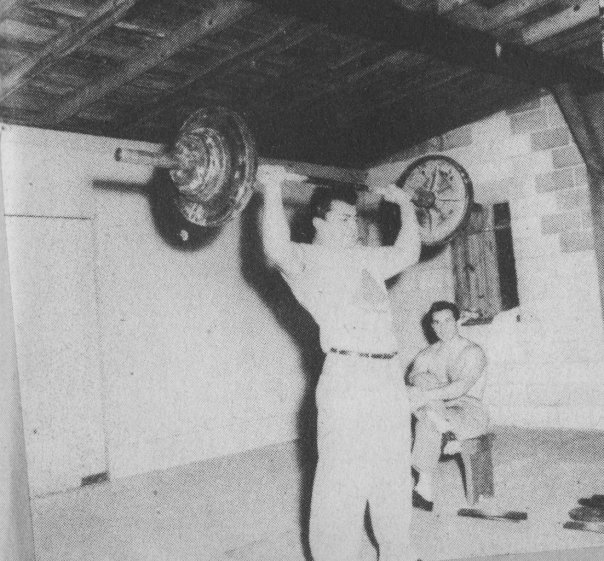
For the moment, I’m going to put all professionalism aside, so you’ll have to forgive me.
My clients have noticed that my approach to training has changed. Most of you have gotten onboard with this new approach, and I thank you for your trust and the level of focus that you have demonstrated. You’re a damn good bunch. I have discussed my reasons for changing with you, and I believe most of you can appreciate the value in what I am doing.
One of you didn’t, and that’s why I’m writing this post. In case I have not made my point clear to everyone (and circumstances have led me to believe that I have not), I’m going to discuss my thought process at length with you here.
On personal training: the industry standard no longer employs weight training to get people stronger but to condition them cardiovascularly. The typical training session will involve keeping a person moving with light weights and high repetitions, getting his or her heart rate up, and opening up the old sweat valves. Sound like something else? This is precisely what you do when you run, walk or pedal away mindlessly on your exercise bike. Clients are usually told to finish up their session with a bout of long slow distance on the treadmill or bike, essentially extending the cardiovascular training session begun in the first half hour to an hour or more. THIS IS A F***ING WASTE OF YOUR TIME.
I know, I know: this is what people expect training to look like. If they’re not sweating like a Tennessee moonshiner being chased by the law, OR on the verge of puking, OR so sore the next day that they have to fall down on the toilet like my grandmother trying to take a shit, then they don’t feel as if they’ve been trained properly. Real training doesn’t have to, and shouldn’t, incapacitate you for days on end, and if it does, then you’ve missed valuable time better spent practicing your basic lifts, like the squat, military press, and deadlift, which will get you really strong and really lean.
I am not going to do your cardiovascular training for you anymore. IT IS A WASTE OF MY TIME. It is your responsibility to perform whatever cardio you might feel that you need on your own time. I’ll even brainstorm it with you. Weights are for improving strength. If you need someone to design cute little movement patterns involving light weights for you, then you need to find another trainer. I am not a choreographer, and I am not a glorified repetition counter.
So I’m preaching to the choir, I know. Just humor me a little. Let’s say that maybe you think strength training is not for you? Then maybe life is not for you because last time I checked strength is what defines one’s quality of life inside and outside of the gym, especially the older we get. Dammit, someone tell me how exactly strength is not supposed to be important!
It’s a biomechanical fact of every individual’s makeup that heavy sets of (roughly) five repetitions involving the “big” lifts supply the precise metabolic and structural stressors to elicit strength gains and build lean muscle tissue. You cannot argue this point, and no matter how much you want to believe differently, you cannot change what nature or God or what-have-you has set in stone. Sorry.
By now, you might be wondering what I think about cardiovascular training of the long slow variety. If you don’t own a car and you have to walk to the gym so that you can meet with me for a strength session, then I think it’s fine. If you’ve ever done heavy sets of five with me, however, you know what happens to your heart and lungs as a result of those heavy sets of five, the exhaustion you experience and the amount of stress this places on your entire system, consequently. The stress of a heavy set of five does in fact mimic the stress which you experience, say, when you’re under the gun at work trying to meet a deadline or trying to avoid a fistfight with an asshole coworker. So while you won’t be able to run marathons, you’ll likely be able to make the sprint over to your desk where you can dial up that medic for the guy whose ass you just whooped, all without breaking much of a sweat, of course. Nevermind that heavy sets of five do in fact improve endurance somewhat, but that running or biking or walking improves only, well, running or biking or walking.
Lastly, I would like to address the circumstances that sparked this little tirade of mine. This week marks the first time in my training career that I have lost a longtime client to another trainer. It shouldn’t have shocked me, given her history, but I let my guard down. The fact of the matter is this: if you book three appointments a week with me, only making--on average--one appointment a week; if you ask me for advice on nutrition and I give it to you, but you don’t follow through with it; and further, if you lie to me and make excuses about why you haven’t been following through, then whose fault is it that you haven’t made any progress? Is it the fault of the trainer or, perhaps, the program that he has you on? Attributing your failure to anyone but yourself at that point is the most abject kind of sick, irresponsible horseshit that will doom you to failure time and time again because the common denominator in all your problems is--guess what?--YOU, not some unseen boogeyman of your perpetual undoing. Go find your next fad diet, go find your next excuse, please. Just don’t waste anymore of my time, capiche?
Now back to your regularly scheduled program…


